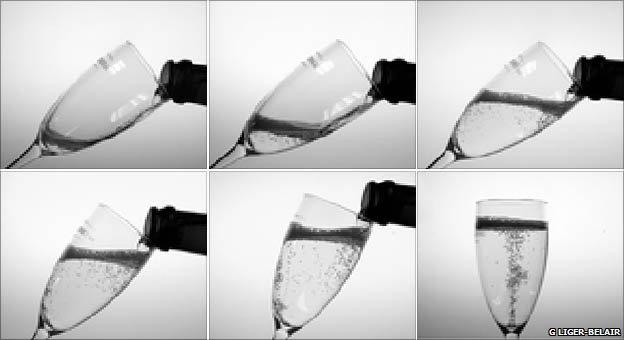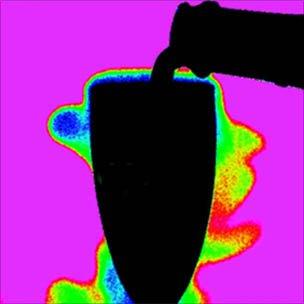Champagne should be poured 'like beer'
- Published

The researchers say it may be time to revisit the way champagne is served
It could be time to revisit the way champagne is served, according to scientists.
Researchers, based (appropriately) in France's Champagne region, say the effervescent drink should be poured "like beer" in an angled way, down the side of the glass.
This method of serving, they found, was best to preserve its taste and fizz.
Previous research has shown that keeping these CO2 bubbles in drink enhances its flavour.

Infrared imaging showed CO2 gas escaping from the drink as it was poured
The findings are reported in the Journal of Agriculture and Food Chemistry.
The study also showed how chilling champagne affected its flavour.
Gerard Liger-Belair from the University of Reims and his colleagues measured the loss of CO2 gas from champagne as it was poured. They compared three champagne temperatures - at 4C, 12C and 18C - and two different ways of serving.
Infrared imaging showed the clouds of CO2 escaping from the drink as it was poured.
The beer-like pouring method, where the champagne flowed along the inclined flute wall, was much less turbulent and released less gas than the more traditional pouring method.
Colder temperatures were also better for preserving the precious bubbles.
What the researchers described as a "champagne-like" way of serving - pouring the drink vertically so it hit the bottom of the flute - generated a thick head of foam.
"This quickly vertically extends and then progressively collapses during serving," they reported. "This way is the traditional way of serving champagne and sparkling wines in bars, clubs, and restaurants".
The scientists concluded: "Since dissolved CO2 is known to be of great importance in champagne and sparkling wine tasting, would not it be pertinent to revisit the way champagne should be served?"
Dr Liger-Belair and his colleagues are now constructing a mathematical model to describe "CO2 discharge during the champagne pouring process".